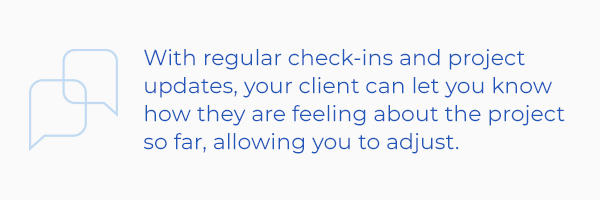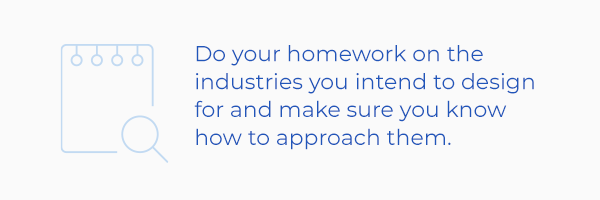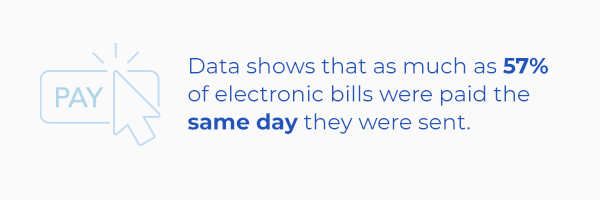9 Expert Ways to Improve the Architectural Client Relationship

Many architects spend much of their time mastering the art of executing projects. And as they should—architectural projects are complex endeavors with a lot of moving parts and exchanging hands. However, often ignored is one of the most critical components of the industry—the relationship with the client. After all, without clients, your firm will not have projects to work on. It’s in your best interest to keep these relationships sound, healthy and happy in order to run a successful architectural business.
Here, we’ll break down nine ways to foster the best results for your clients, now and in the future.
Improve communication with the client
In any client-professional relationship, good communication is absolutely essential. This is especially true in the technology driven world we live in today. Consider for a moment how we are able to keep track of our packages or food being delivered to us, or how quickly we can pass text messages to one another. It’s easier than ever before to convey information to one another, and thanks to our devices, we can do this from practically anywhere.
Because of this, it behooves you to stay in touch with your clients as your project progresses. Of course, this doesn’t mean you need to provide minute by minute updates. But it does mean that, when major milestones are reached, or important decisions need to be discussed, you are reaching out to your client to bring these items into their sphere of awareness. Don’t leave them in the dark. By keeping in touch with your clients, you reduce chances of sowing doubt in your relationship and help foster more satisfaction in your results.

Create opportunities for feedback
Effective, consistent communication with your clients also opens the door to feedback on your work. Some clients can feel like they don’t have a clear view of where the project is going, or how it is being accomplished. Furthermore, they may feel they have no say in the project they are paying good money for. With regular check-ins and project updates, your client can let you know how they are feeling about the project so far, allowing you to adjust trajectory if needed and ensure you are both on the same page as you go forward.
Even if you have an excellent track record and a proven skillset, keeping your clients involved will allow them to see these traits first hand. And in turn, they can spread the word about your attention to detail with first-hand experience.
Be transparent about your financials
We’ve discussed before how important it is to be open and honest about your design process with current and potential clients. It is equally important to be upfront about your billing process, as well. Make sure you have a full understanding of your client’s budget and timeframe, and moreso, that your client understands your fees and rates.
Much of this can be accomplished by demonstrating your design process to your client as soon as possible. This ensures you both are on the same page when it comes to goals and the roadmap of the project. This also gives you an opportunity to discuss whether some aspects of the project are feasible, both from a time and a financial standpoint. Get ahead of this now before the project begins, and the chance for disagreements or surprises down the road can be diminished.

Know your client
You may have developed a surefire way to execute a project from start to finish. However, bear in mind that there is no “one-size-fits-all” solution when it comes to design. It’s absolutely critical to approach each project based on who your client is, and what their industry needs. For some clients, you may need to factor in cost or savings more than the aesthetics. For others, you may need to design more with efficiency and risk-aversion in mind. Do your homework on the industries you intend to design for and make sure you know how to approach them.
This idea also applies to the initial meetings when showcasing your previous work and roadmap. Make sure you emphasize the type of projects that you know will appeal most to the client. For the cost-oriented, discuss how you save money or stretch budgets while building out your projects. For the aesthetic client, showcase your most eye-popping work. The more you can appeal to their sensibilities, the greater the chance you will provide what they want.
Build trust
All successful relationships are built on a solid foundation of trust. Maintain that trust with your clients by only making promises you can keep. While your instinct may be to answer yes to your client’s requests, you’ll be doing both of yourselves a favor by knowing your limits and keeping your foot down when you know you cannot deliver what they ask for. Keeping lines of communication open is an effective way to maintain this, as you can openly discuss progress on the project and jump on problems if they arise. Plus, your honesty will be rewarded in the future, as your client will likely want to continue business with you, or recommend you to others.

Make a great first impression online
In the Age of the Internet, every business needs to have an online presence. Without any sort of listing on the internet, your practice may as well not exist at all. The internet is where your potential clients will be looking for your services, so you want to impress them off the bat. Part of this involves building and maintaining a website, but it also means creating a Google listing. This is likely going to be your potential client’s first point of contact for your business, so make sure your correct phone number, address, and URL are listed.
Online presence also means being active on social media. Infrequent posts can give off a sense of apathy, and can even outright scare away clients. You should aim to post at regular intervals, either once a day or a few times a week. This gives your work more visibility and conveys to the public that you are a modern business.
Be knowledgeable
Speaking of being modern, how often do you do research on the latest news and updates affecting the architecture and design industry? A good architect keeps their finger on the pulse on the latest materials, prices, codes, and trends affecting their industry. Your clients will be looking to you to know the best and most modern way to accomplish their project. The more you know about what’s happening in the architecture world, the more future proof your practice is.
Keep expectations in check
As your project progresses, there may be moments where your client suddenly makes a request at the last minute. While you may want to meet your client’s every need, the best course of action is to stay realistic and stick to your plan as much as feasible. By catering to these sudden whims, you may end up doing more harm to the project than good, particularly if it turns out the ask cannot be executed properly or within their budget. Your client may feel disappointed at your rebuke, but in the long run, it’ll be better for them and for the project overall.

Embed technology into the relationship
This may feel like a no brainer, but it’s nevertheless important. Architectural software solutions have made blueprinting, site planning, and project management easier, faster, and more robust than ever before. For example, with 3D modeling software, you can easily show your client your plans for their project in explicit detail, which can minimize misunderstandings and leave more room for revisions and suggestions before the project gets off the ground.
Online payment solutions can also improve your projects, by making it easier for your clients to pay your fees as the project progresses. The best solutions offer payments by credit card, debit card, or even electronic checks online, allowing your clients to quickly pay whenever you issue an invoice. Plus, these payment options have the benefit of processing much faster than traditional means. In a study of payment solutions among legal professionals, data showed that as much as 57 percent of electronic bills were paid the same day they were sent. By giving them an easy and fast way to pay, you’ll foster good will in your clients.
Improving your client relationships will only serve to be a boon for your business. Keeping your clients happy and informed (and keeping expectations in check) will result in clients who will want to start new projects with you, and bring outside business to your table.
See how ClientPay can streamline your billing by scheduling a demo today.